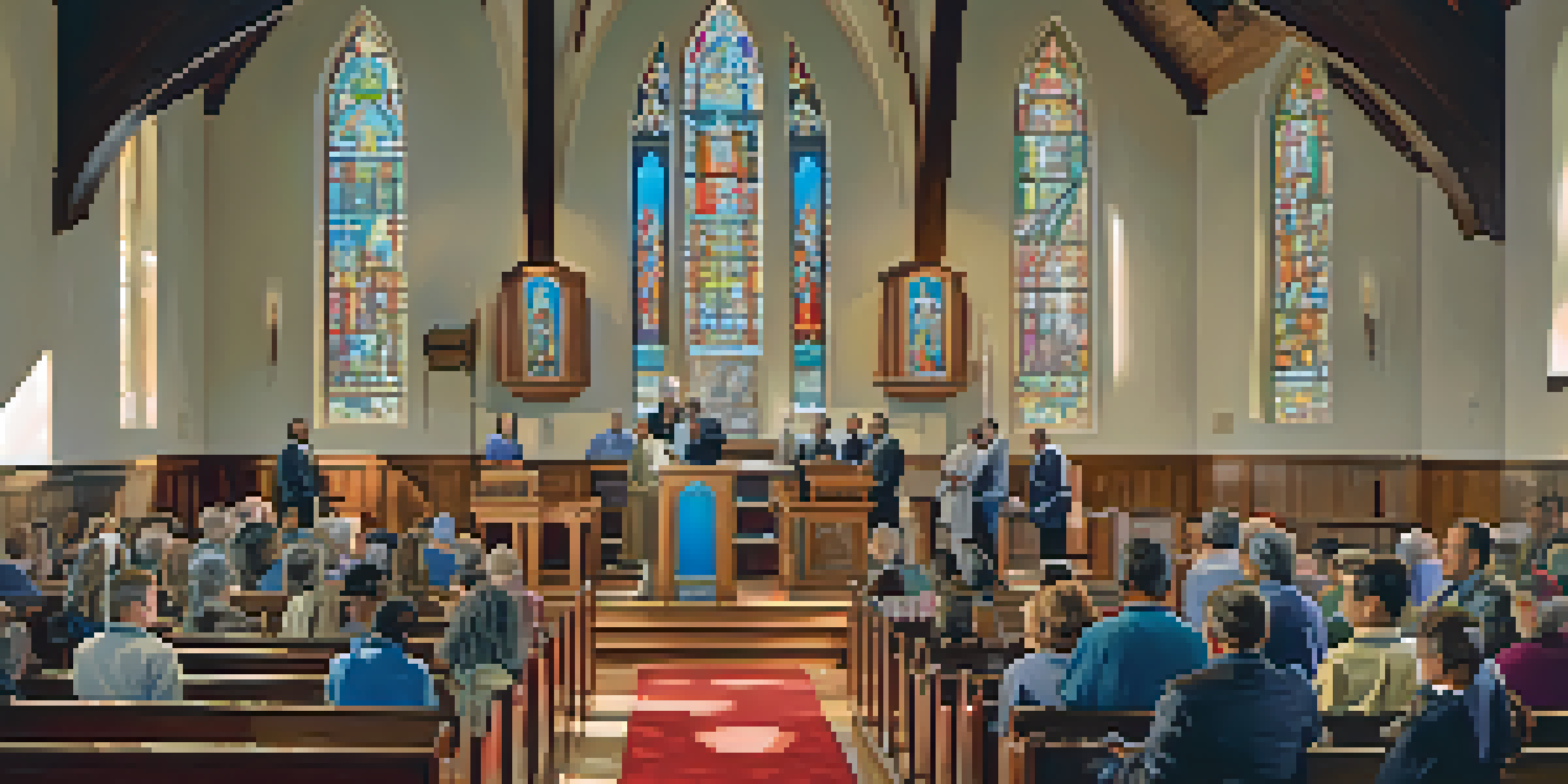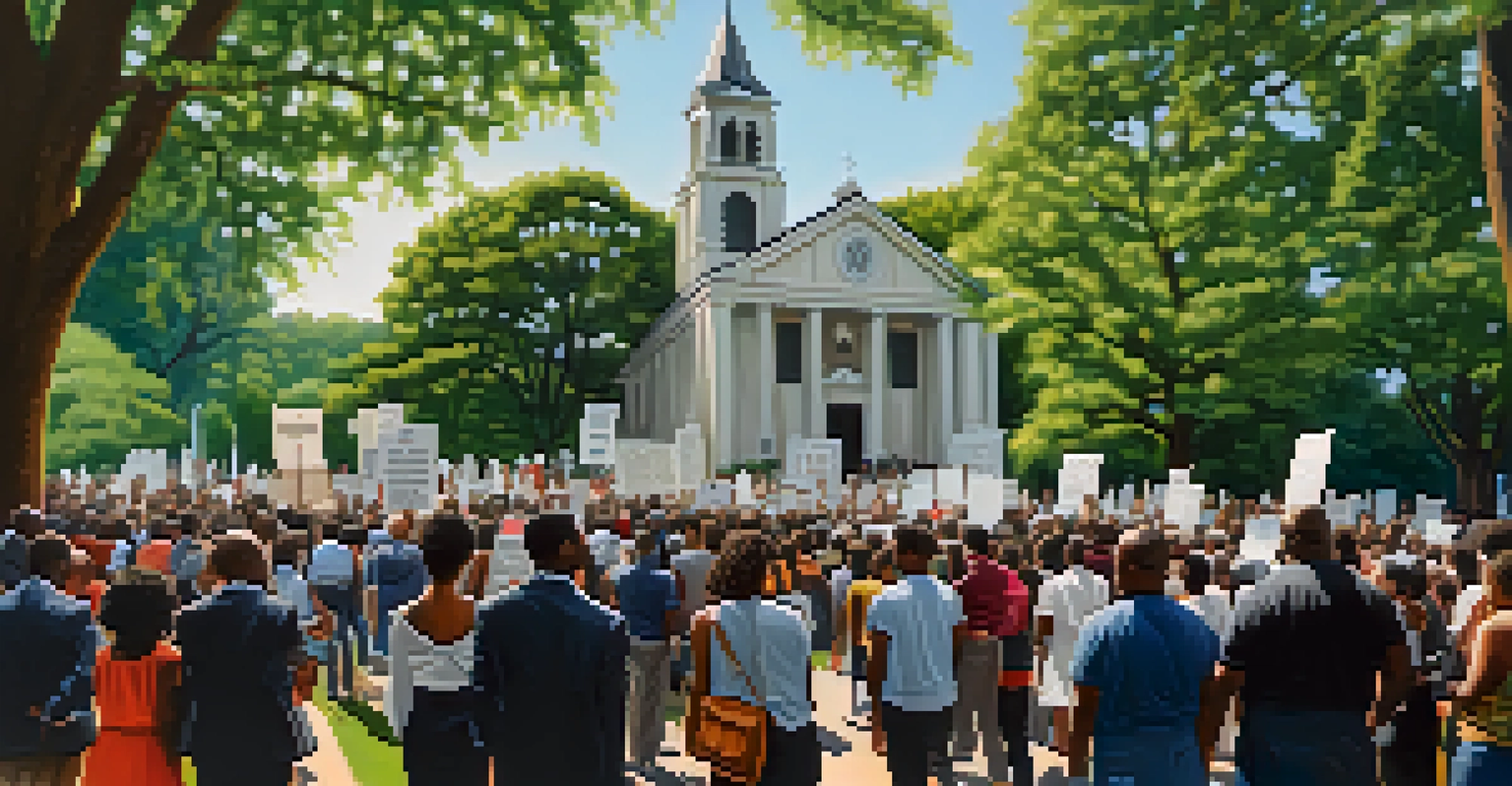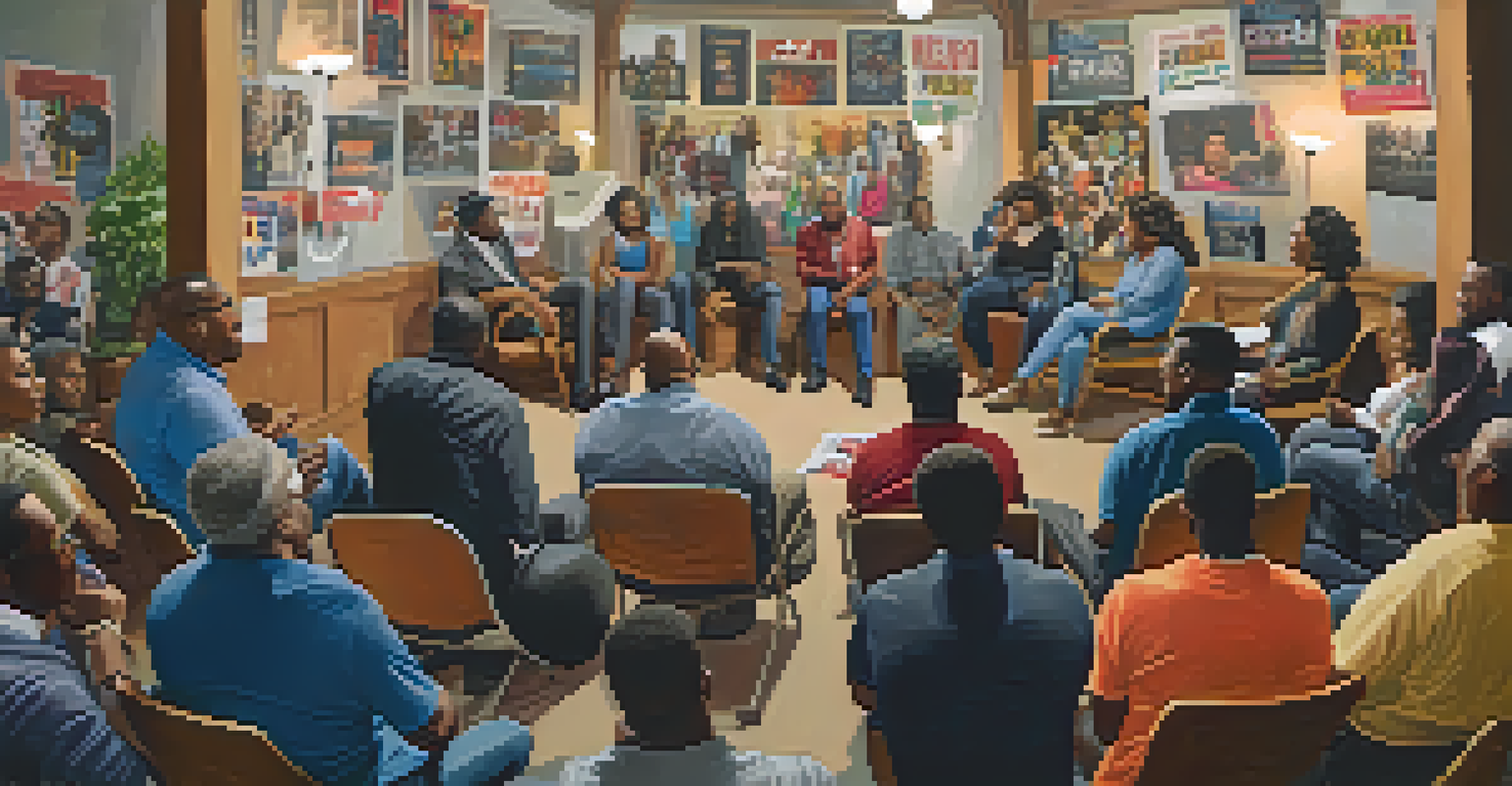The Role of Atlanta's Churches in Civil Rights Activism

Historical Context of Atlanta's Churches in Activism
Atlanta has a rich history of churches that have served as community hubs, particularly during the Civil Rights Movement. These places of worship were not just spiritual sanctuaries but also safe spaces for organizing and strategizing against racial injustice. With their deep roots in the African American community, churches became pivotal in fostering a sense of unity and purpose among activists.
Faith is taking the first step even when you don't see the whole staircase.
In the 1950s and 1960s, as the fight for civil rights gained momentum, many church leaders emerged as key figures. They played a crucial role in mobilizing congregations to participate in protests, marches, and sit-ins. This activism was often driven by a profound sense of moral obligation, as the church's teachings emphasized justice and equality for all people.
For many, attending church was not just about worship; it was an opportunity to engage in meaningful dialogue about societal issues. This blend of faith and activism helped to galvanize support for the Civil Rights Movement, making churches an ideal backdrop for revolutionary ideas.
Key Figures: Ministers and Activists
Prominent leaders like Dr. Martin Luther King Jr. emerged from Atlanta's churches, embodying the intersection of faith and activism. As a pastor at Ebenezer Baptist Church, King utilized his platform to inspire change and promote non-violent resistance. His sermons often highlighted the moral imperative to fight against racial injustice, resonating deeply with his congregation and beyond.

Other influential figures, such as Reverend Ralph Abernathy and Dr. Joseph Lowery, also played significant roles in leading protests and advocating for civil rights. Their leadership styles varied, but they all shared a commitment to the cause, often drawing on the teachings of the Bible to bolster their arguments for equality and justice.
Churches as Activism Hubs
Atlanta's churches served as crucial safe spaces and organizing centers for civil rights activism, blending spiritual guidance with social justice efforts.
These ministers not only led their congregations but also collaborated with other activists, creating a powerful network of support. Their collective efforts showcased the strength of community and the profound impact that faith-based leadership can have on social movements.
Churches as Safe Spaces for Activism
Churches provided a sanctuary where activists could gather to discuss strategies and plan actions without fear of persecution. During a time when openly opposing segregation could be dangerous, these sacred spaces offered a sense of security and solidarity. Members could express their frustrations, hopes, and dreams for a more equitable society in an environment shielded from external threats.
Injustice anywhere is a threat to justice everywhere.
In addition to offering physical refuge, churches were instrumental in educating their congregations about civil rights issues. Sunday sermons often included discussions about social justice, empowering individuals to understand their rights and the importance of activism. This education was crucial in transforming passive supporters into active participants.
The role of these churches as safe havens extended beyond mere discussions; they often became logistical centers for organizing protests and rallies. This not only solidified their place in the movement but also illustrated the vital link between faith and social justice.
Community Outreach and Support Initiatives
Atlanta's churches were heavily involved in community outreach programs that addressed the needs of marginalized populations. These initiatives included food drives, clothing donations, and educational programs aimed at empowering individuals. By addressing immediate needs, churches built trust and demonstrated their commitment to uplifting the community.
Many churches launched initiatives that focused on voter registration, helping to ensure that African Americans could exercise their rights. This work was essential in combating systemic disenfranchisement, highlighting the importance of civic engagement as a means of achieving equality. Through these efforts, churches became instrumental in shaping a politically aware and active community.
Key Leaders in Civil Rights
Prominent figures like Dr. Martin Luther King Jr. emerged from these churches, using their platforms to inspire change and promote non-violent resistance.
The outreach programs not only provided tangible support but also fostered a sense of belonging and identity among community members. This connection encouraged individuals to participate more actively in the Civil Rights Movement, reinforcing the idea that collective action could lead to meaningful change.
The Legacy of Church-Led Movements
The legacy of Atlanta's churches in the Civil Rights Movement is profound and far-reaching. Their commitment to social justice and community empowerment laid the groundwork for future movements advocating for equality. This enduring influence can be seen in contemporary social justice efforts that continue to draw inspiration from the church's historical role.
Many of today's activists still look to the teachings and examples set by church leaders during the Civil Rights era. The principles of non-violence, community organization, and moral responsibility remain cornerstones of activism. This connection ensures that the lessons learned from the past continue to resonate in modern struggles for justice.
Furthermore, churches continue to play a role in advocating for civil rights today, addressing issues such as racial discrimination, immigration reform, and economic justice. This ongoing commitment underscores the enduring significance of faith-based activism in shaping a more equitable society.
Interfaith Collaboration in Activism
One of the remarkable aspects of Atlanta's churches during the Civil Rights Movement was the collaboration between different faith communities. While predominantly African American churches led the charge, many white churches and synagogues joined in solidarity. This interfaith cooperation broadened the movement's appeal and highlighted the universal desire for justice.
These interfaith alliances often emphasized shared values and common goals, creating a powerful coalition against racism. By uniting diverse groups, they demonstrated that the fight for civil rights transcended religious and racial boundaries. This approach not only strengthened the movement but also fostered understanding and empathy among different communities.
Community Outreach Efforts
Churches engaged in extensive community outreach initiatives, empowering marginalized populations and fostering a politically aware community.
Such collaboration had lasting effects, paving the way for future interfaith initiatives aimed at addressing social injustices. The spirit of cooperation established during the Civil Rights Movement continues to inspire current interfaith efforts, demonstrating the ongoing relevance of unity in the face of adversity.
Challenges Faced by Churches in Activism
Despite their significant contributions, churches faced numerous challenges while engaging in civil rights activism. One of the most pressing issues was the backlash from those who opposed the movement, including threats, violence, and economic repercussions. Many church leaders risked their safety and livelihoods, demonstrating their unwavering commitment to justice.
Additionally, the churches had to navigate internal divisions regarding the extent of their involvement in political activism. While some congregants embraced the fight for civil rights, others were hesitant, fearing the potential fallout. This tension within the community often made it difficult for church leaders to maintain unity while pushing for change.

Despite these challenges, the resilience of Atlanta's churches shone through. Their commitment to social justice, combined with the support of their congregations, allowed them to persevere in the face of adversity, ultimately playing a crucial role in the success of the Civil Rights Movement.